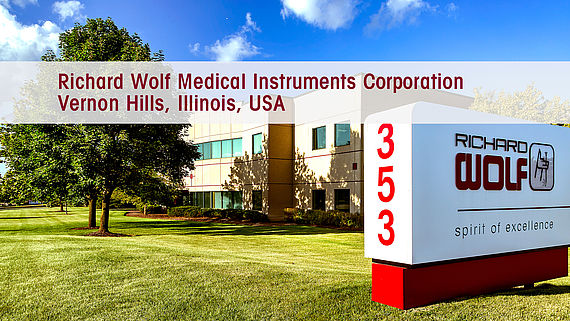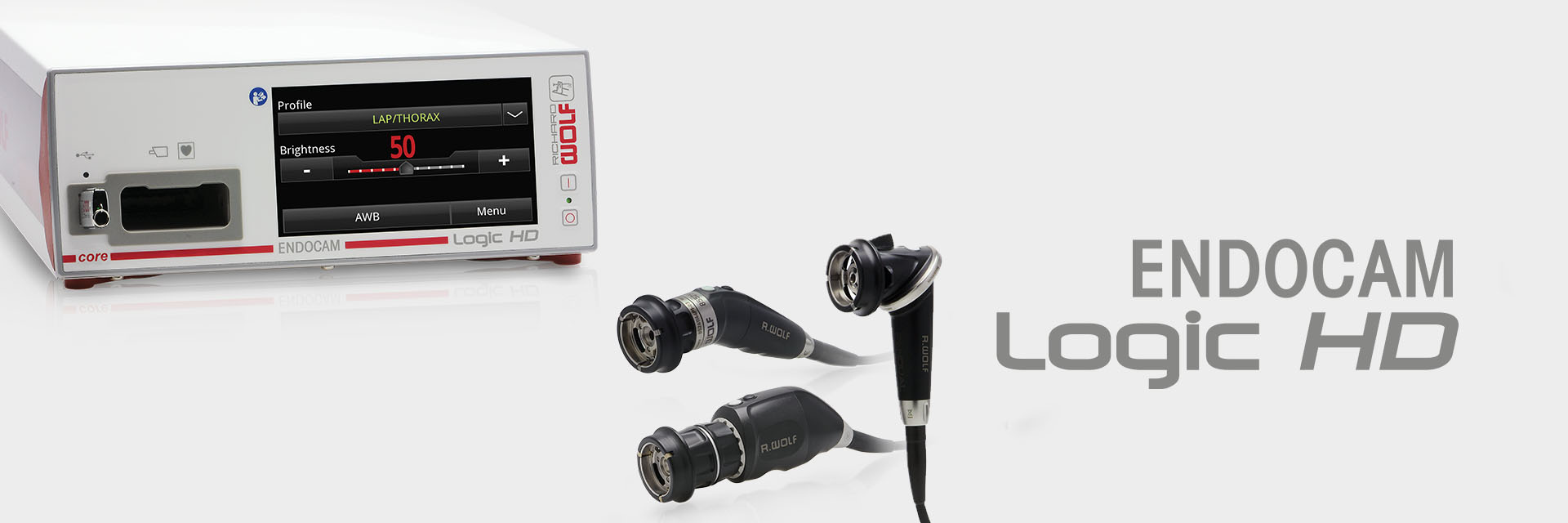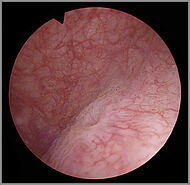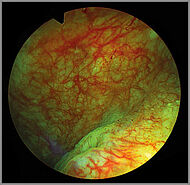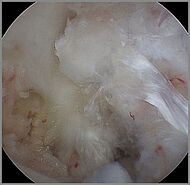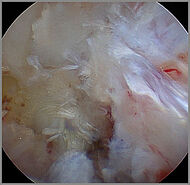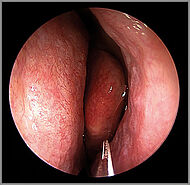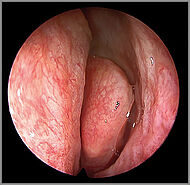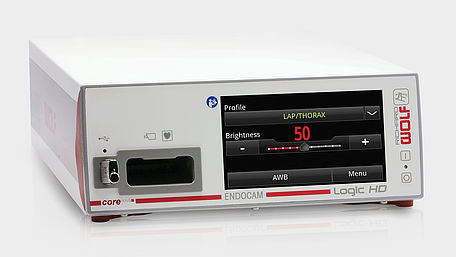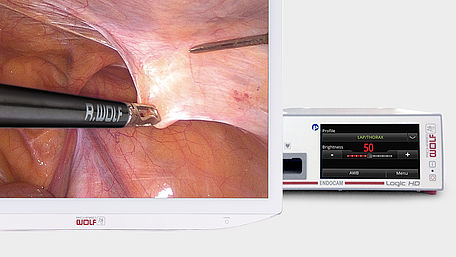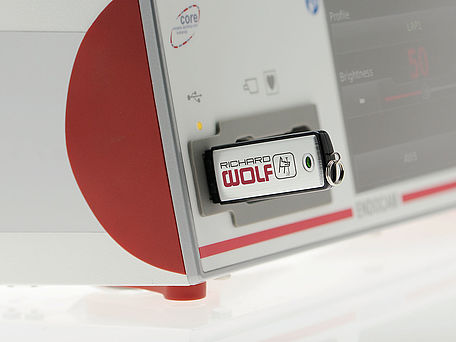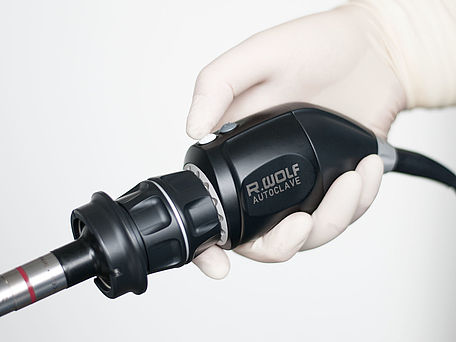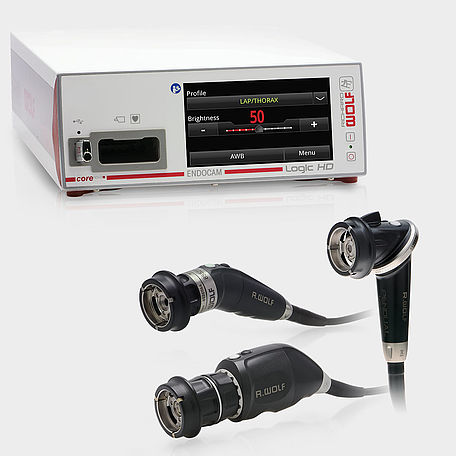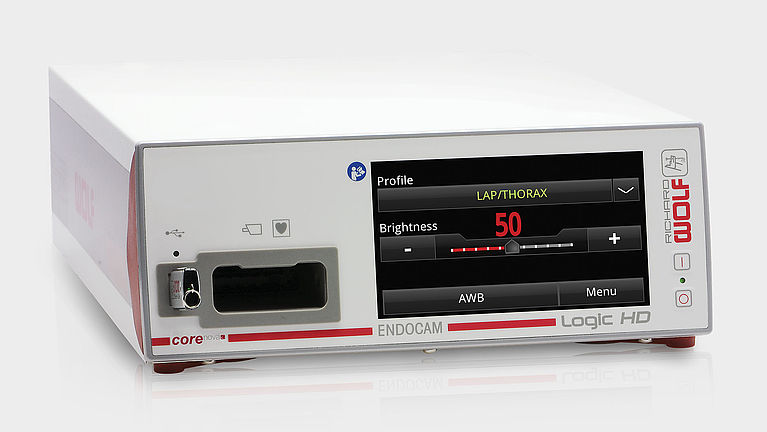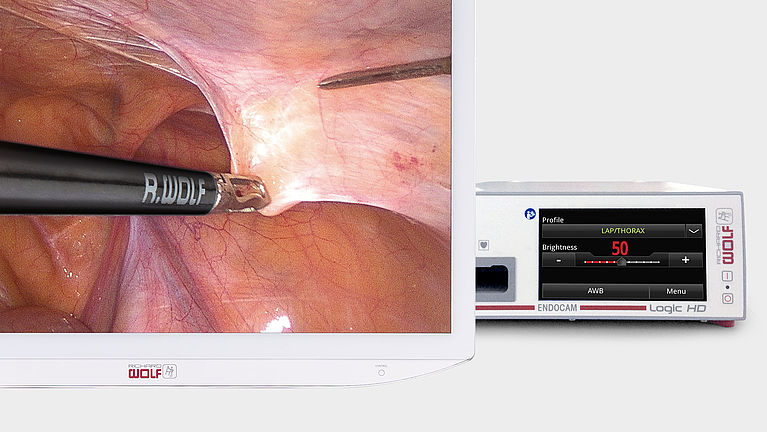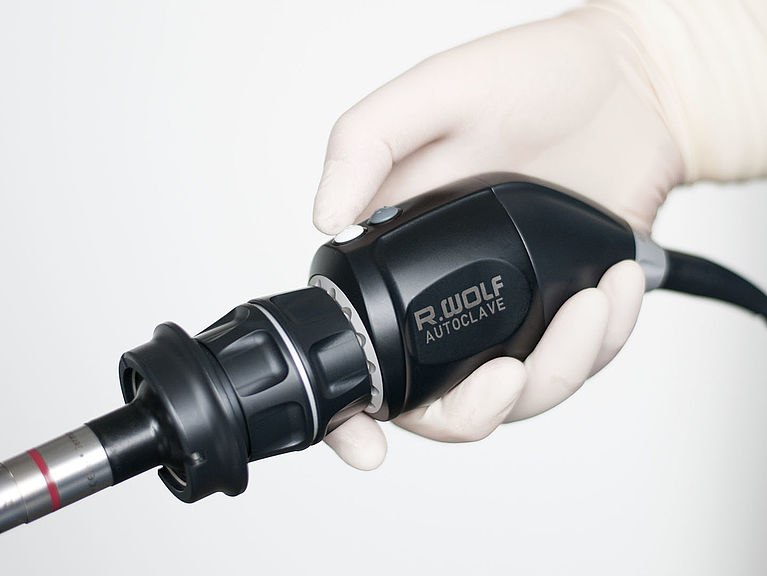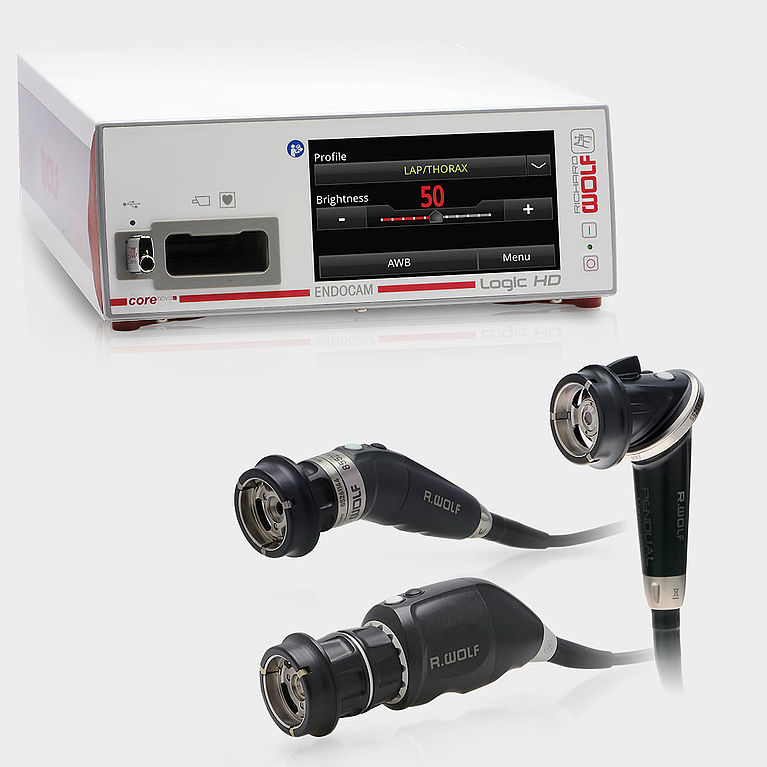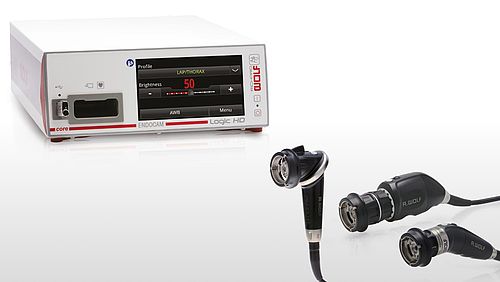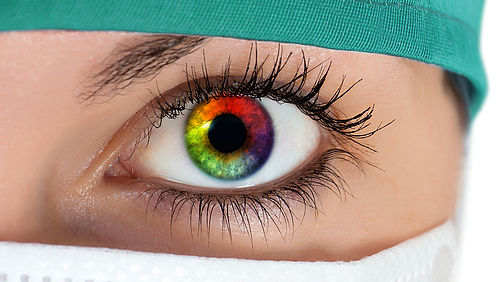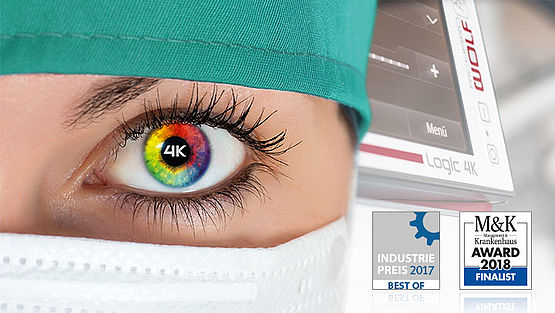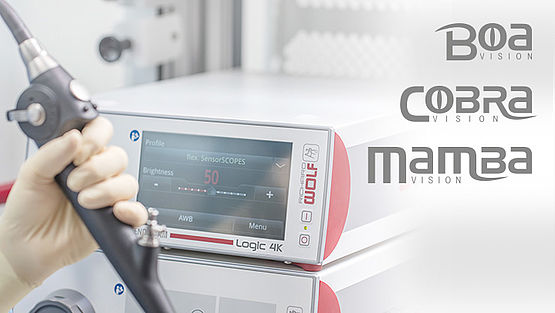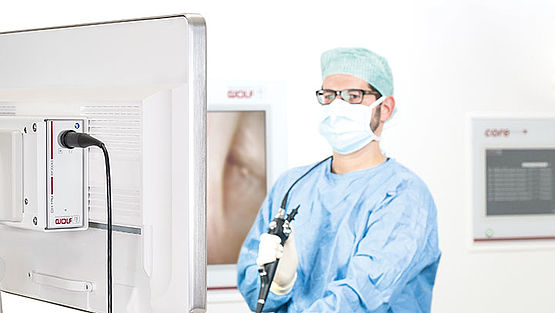ENDOCAM® Logic HD Camera System
The future is logic.
Richard Wolf’s ENDOCAM Logic HD camera system is an innovative, turnkey system comprised of a user-friendly camera control unit, brilliant high definition monitors, and a variety of ergonomic HD camera heads. It is also compatible with core nova, our fully network-based OR integration system, and our vision family of flexible sensor endoscopes.
Features at a glance
dialog technology
Our proprietary technology allows the ENDOCAM Logic HD system to communicate directly with the light source, automatically adjusting light intensity as needed. In addition, important status indicators from dialog-compatible devices (e.g., Insufflator Highflow 45) are clearly displayed on the monitor so you can quickly see critical information, including pressure, flow, and consumption.
Ease of use
Equipped with a number of preset surgical profiles that have been field-tested for a wide range of endoscopic specialties, the ENDOCAM Logic HD allows surgeons and technicians to optimize the system to best fit their needs. Using the system’s intuitive menu, a user can also save preferred settings and store customized user profiles.
Pendual Camera Head
Richard Wolf’s award-winning Pendual camera head is an ideal solution for surgical applications where freedom of movement is key. With a simple twist, the Pendual can be converted from a 90° camera head to a straight camera head.
Integrated documentation
The ENDOCAM Logic HD system can record still images and full HD videos directly onto a USB storage device. The camera control unit’s USB port enables in-field software updates, ensuring the system is always in sync with Richard Wolf’s latest video technologies.
Special Imaging Modes (SIM)
In addition to natural white image rendering, six different special imaging modes can be activated by pressing a button on the camera head. In certain situations, these algorithms can help improve tissue differentiation
Other products you may be interested in
